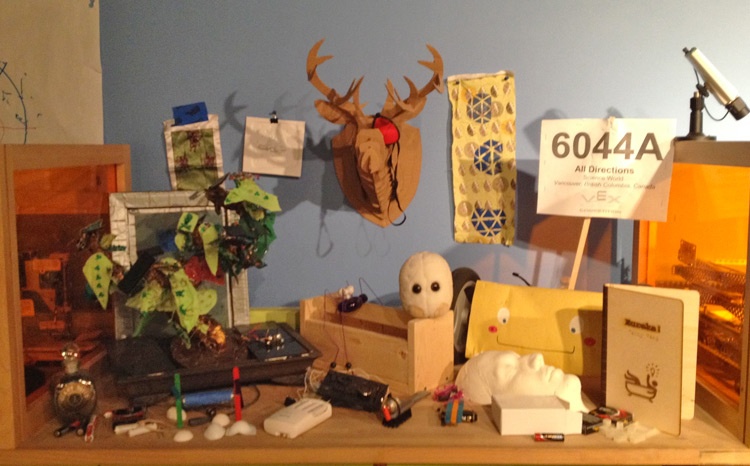Makers get really excited about building projects. At an event like Maker Faire, the feeling is contagious. So many of the conversations that you overhear are either detailed dissections of how an exhibit was made or impromptu brainstorming sessions about the next big idea. As an educator walking around my local Maker Faire, I was eager for my students to share the same feeling of excitement.
The next year I reserved a booth for the students in my after-school makerspace program. I told them that they would have eight weeks to work on any project they were interested in, and the ideas started flying almost immediately. It was great to see how motivated my students were to follow their own creative direction, but as the deadline approached, I realized that we had a problem: many of them had taken on projects that were too ambitious for our limited timeline.

We all struggle to complete ambitious projects before a hard deadline.
Photo by August Schwerdfeger, The Bakken Museum.
Looking back, it seems obvious that students would need help meeting a hard deadline. Anyone who does creative work knows the feeling of getting too ambitious, then having to scale back a project at the last minute, but there’s an art to gently limiting the scope of a student project while leaving them with a feeling of creative freedom.

Student projects from an after-school makerspace program.
In the end, with some last-minute help and a few extra work sessions, most of my students managed to scale down their projects, and we had a great time exhibiting, but the experience changed the way that I facilitate student-driven projects. Here are some of the strategies that I’ve found helpful for managing project scope:
- Set some constraints for the students, and then let them be creative within those bounds. For example, set a target audience, a list of materials to work with, or encourage them to combine skills that they’ve already learned in class.
- Have students pitch projects to you early in the design process so that you can check the scope of the project and suggest simplifications if you think they’re necessary.
- Encourage students to break ambitious projects into smaller chunks that give them something to show. A working prototype or model is a great stand-in for a fully finished project.
- Use critique sessions as soft deadlines that put some pressure on students to have ideas of prototypes ready to present before the final due date.



makerspace, student projects